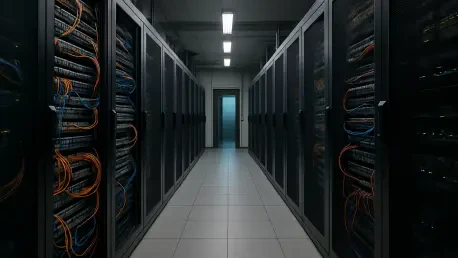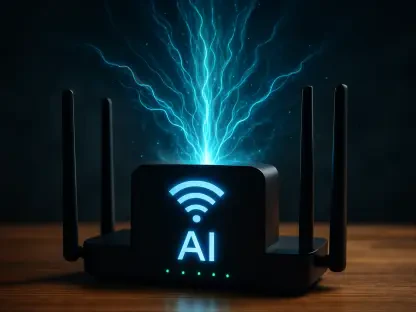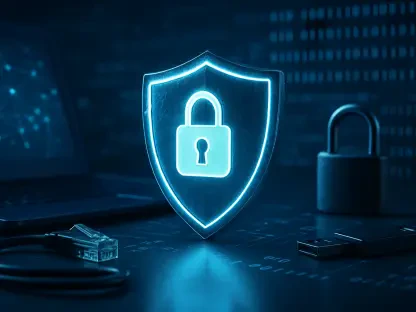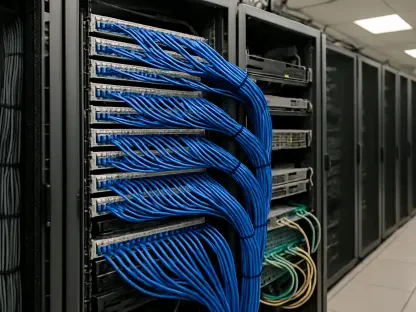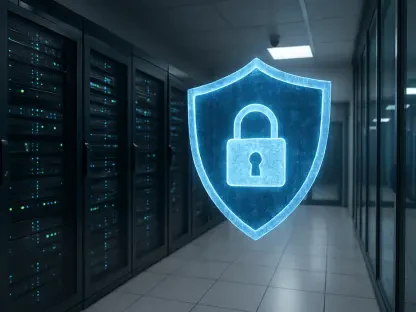I’m thrilled to sit down with Matilda Bailey, a renowned networking specialist with a deep focus on cutting-edge cellular, wireless, and next-gen solutions. With her extensive expertise in data center networking and emerging technologies, Matilda offers a unique perspective on the latest tools and trends shaping the industry. Today, we’ll dive into the challenges of modern data centers, exploring innovative testing solutions, the impact of high-density fiber connections, and the persistent issues technicians face in maintaining network reliability. Our conversation will touch on everything from contamination risks to advancements in cable identification and the future of data center infrastructure.
How did the idea for advanced testing solutions like the Versiv Data Center Kits come about, and what specific gaps in hyperscale and enterprise data centers were you aiming to address?
The inspiration for solutions like the Versiv Data Center Kits really stemmed from the evolving complexity of data center environments. As networks scaled up to hyperscale and enterprise levels, we saw a growing need for tools that could handle both copper and fiber connectivity issues efficiently. The gaps were clear—technicians needed faster, more reliable ways to commission, troubleshoot, and maintain networks across the entire lifecycle. We focused on creating bundles that address these pain points by integrating comprehensive testing capabilities, ensuring that whether it’s a new installation or ongoing maintenance, the tools are versatile enough to keep up with the demands of modern data centers.
Can you walk us through the different bundles in the Versiv Data Center Kit lineup and explain how each one tackles unique challenges in network maintenance?
Absolutely. The lineup includes three targeted bundles. First, the Fiber and Copper Commissioning and Troubleshooting Kit is all about end-to-end network verification, supporting everything from initial setup to ongoing troubleshooting. Then, we have the Fiber Inspection Kit, which zeroes in on contamination—a major culprit behind fiber performance issues. It’s designed to help technicians detect and prevent those problems early. Lastly, the MPO Maintenance and Troubleshooting Kit is tailored for high-density fiber connections, drastically cutting down testing time for multi-fiber setups compared to traditional methods. Each bundle addresses a specific layer of complexity in data center operations, ensuring no issue goes unchecked.
Why is contamination such a critical focus when it comes to fiber connections, especially in high-density environments?
Contamination is a huge deal because even the tiniest speck of dust on a fiber—smaller than a human hair—can disrupt an entire connection. In high-density setups with up to 24 fibers in a single connector, the risk multiplies compared to older duplex connections with just two fibers. A single contaminated fiber can cause signal loss or complete failure, leading to downtime and costly repairs. That’s why inspection and cleaning are non-negotiable, even if they add a minute or two of work. Skipping those steps can result in cascading issues that are far more time-consuming to fix down the line.
With the rise of Very Small Form Factor connectors like MDC and MMC, how are these changing the landscape of data center design and performance?
These Very Small Form Factor connectors are game-changers for data centers, primarily because they enable much higher port density without sacrificing performance. This means you can pack more connections into a smaller space, which is critical for hyperscale environments where real estate and scalability are always at a premium. They support the push for faster, more efficient networks, but their smaller size also demands specialized tools for inspection and cleaning. Technicians have to be extra precise, as even minor mishandling can lead to issues, making the right equipment and training essential to leverage their full potential.
Cable identification remains a persistent challenge in data centers. Can you share how newer tools are making this process smoother for technicians?
Cable identification is indeed a longstanding headache, but we’re tackling it with a few innovative approaches. Tools using tone and probe technology help technicians trace cables even in noisy environments by filtering out interference. We’ve also developed remote identification systems that can handle multiple connections at once, saving time in sprawling setups. One of the most exciting advancements is a device that, when plugged into an active network port, instantly displays the switch name and port number. It even identifies VLAN assignments, which is invaluable for diagnosing connectivity issues tied to network segmentation. These tools reduce guesswork and speed up problem resolution significantly.
Looking at the broader picture, how do you see the future of data center networking challenges evolving, and what role will testing solutions play in addressing them?
I believe the future of data center networking will be shaped by even greater complexity as we push toward higher speeds, denser configurations, and more integration of technologies like Power over Ethernet and advanced Wi-Fi systems. Challenges around power consumption, heating, and cooling will also take center stage alongside cabling concerns. Testing solutions will be pivotal—they’ll need to evolve to provide not just connectivity diagnostics but also insights into thermal imaging and power quality to optimize energy use. We’re heading toward a more holistic approach where testing tools help manage the entire ecosystem of a data center, ensuring efficiency and reliability as demands continue to grow.
